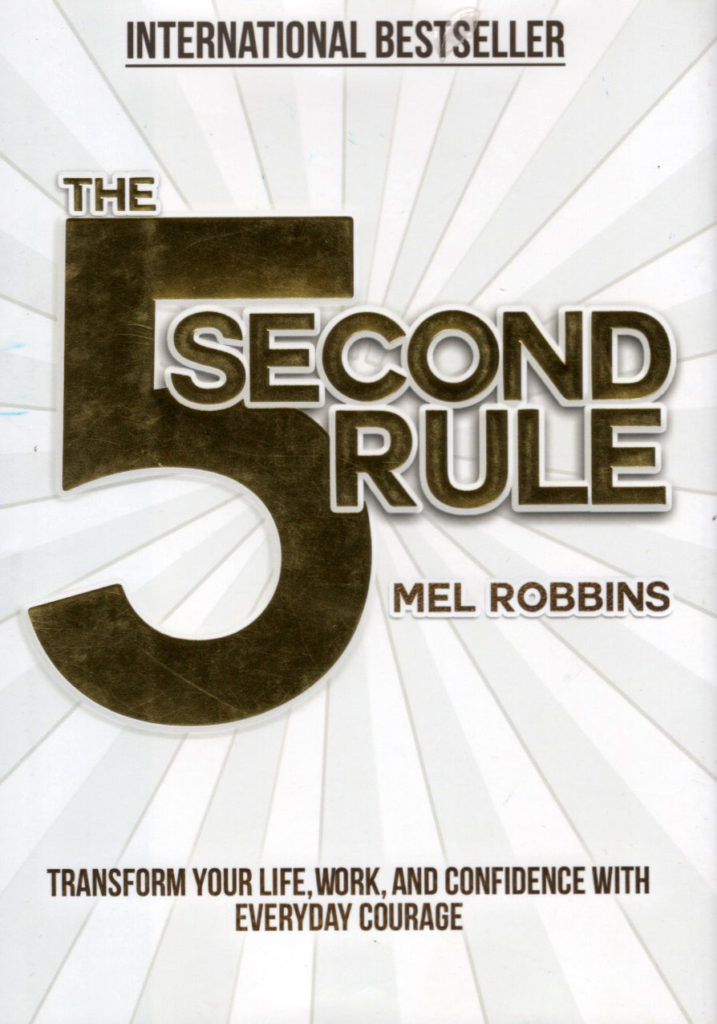 June 14, 2023–A friend posted that she needed to get her life back on track. She mentioned a strategy called the 5-Second Rule. It involves counting down from 5-4-3-2-1.
June 14, 2023–A friend posted that she needed to get her life back on track. She mentioned a strategy called the 5-Second Rule. It involves counting down from 5-4-3-2-1.
What’s this?
Half a Top Ten list?
A Wisconsin Zip Code?
Your first AOL password?
Amazingly, the 5-Second Rule is a book, called, amazingly, The 5-Second Rule, by Mel Robbins.
Most impressive is that the self-help guru squeezed out an entire book on an idea that I am struggling to stretch into a column.
But there is no doubt the concept is elegant and sublime.
The first obvious application is using it to defeat procrastination. How many minutes/hours/days do we spend perched on the edge of the metaphorical bed, willing ourselves to put feet on the floor and start the day? Using the 5-Second Rule, you simply count backwards 5-4-3-2-1, then stand up when you reach 1.
The counting works as an external, impartial, objective entity that cannot be ignored.
Like the microwave timer, the neighbor’s barking dog, or an angry spouse going off across the room, you must get up and address the situation.
This matters, because I believe all of us carry a touch of obsessive-compulsive behavior. We get stuck in an endless loop of habit, performing rituals, thinking negative thoughts, or worrying. Next time you get caught in such a loop, try invoking the 5-4-3-2-1 rule. By the time you count down to 1, you must move on, even if it’s just moving on to the next set of rituals.
“Moving on” is an under-appreciated attribute. As anyone in charge of any group of kids quickly figures out, the enemy of learning is the “transition.” It’s easy to maintain a positive learning environment right up until that moment when it’s time to switch classes.
No matter how engaging your lesson was, you lose every student when you ask them to put away materials, clean up their desks, and generally break the thread of concentration. All the disciplinary problems happen in the hallways as they rush to lockers and scuffle to be first in line at the cafeteria.
This phenomenon happens in every arena:
We don’t want to go to bed at night. We don’t want to get out of bed in the morning.
We don’t want to get in the bath. We don’t want to get out of the bath.
We don’t want to go out at night. We don’t want to go home.
We don’t want to stop for lunch. We don’t want to go back to work.
We don’t want to start working on that column. Then we don’t want to stop writing.
Why does counting down 5-4-3-2-1 work? Robbins cites all types of psychological research, but I think it works because we all act like children, conditioned to yield to perceived authority. That’s why we bow to tax appraisers, stand in line for driver license clerks, and pretend our teacher’s stories are funny.
Sometimes there is nothing more frightening than being responsible for your own actions. When we find ourselves in that adult world where we alone are in charge of our behavior, we often can’t handle the freedom. Counting down 5-4-3-2-1 invokes an all-knowing outside entity that we cannot ignore and must obey.
No, it doesn’t tell us WHAT to do, it just tells us it’s time to DO the next thing. The next thing, of course, is still up to us.
To me, it is the perfect blend of free will and predestination.
All in 5 descending numerals.
I may have misrepresented completely what the original author intended. But that is how I interpreted it: Do something, before and even because you might not be prepared to do it.
Now you try it: 5-4-3…